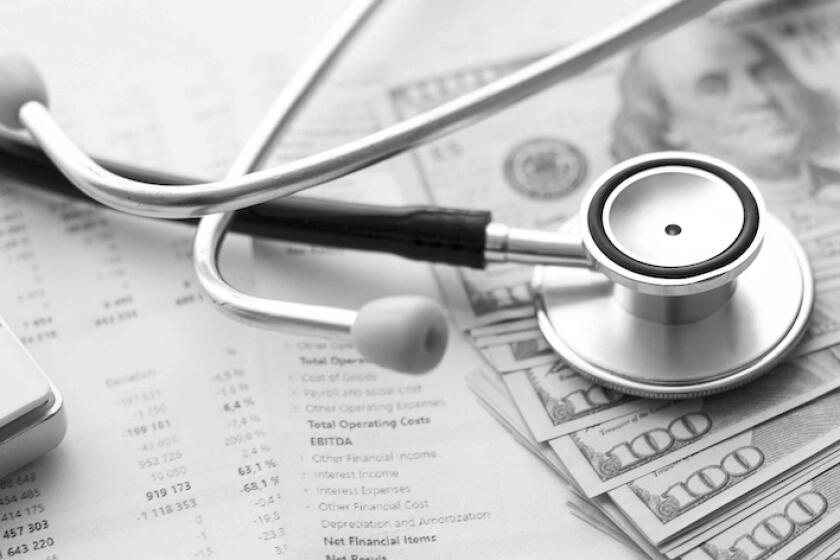GDP growth revised upward
The U.S. economy grew much faster in the third quarter than first estimated, but the latest government report laid bare the vulnerabilities for the recovery as politicians struggle to break the stalemate over government spending and tax policies.
Although the nation’s economic growth rate was revised to a more healthy 2.7% for the third quarter from the 2% pace initially estimated, the Commerce Department said consumer and business spending was softer than previously thought.
Company spending on equipment and software fell for the first time since spring 2009. Experts said the drop-off reflected business leaders’ worries about the so-called fiscal cliff -- a combination of government spending cuts and higher taxes that begins in January unless Congress acts.
“Uncertainty has a cost,” said Diane Swonk, chief economist at Mesirow Financial in Chicago. Looking at the details of Thursday’s economic report, she noted: “The headline [2.7%] figure is very misleading.”
Growth was driven largely by companies building up inventory and the federal government stepping up its spending, mostly for defense. But those are temporary factors. Stockpiling in one quarter tends to lead a drop in corporate purchases in the next, and the quarterly surge in federal military expenditures was most likely an anomaly.
Without stronger contributions from consumers and businesses, the economy is likely to remain stuck in what has been more than three years of a sluggish recovery.
Moreover, cutbacks in business investment are particularly worrisome because they are building blocks for future growth.
Gross domestic product, or the total value of goods and services produced in the nation, expanded on average at an annual rate of about 2% in the first nine months, about where growth has been since the recovery officially began in mid-2009.
At that mediocre pace, the U.S. is unlikely to create jobs fast enough to bring down the current 7.9% unemployment rate any time soon.
Experts widely expect the economy to turn ugly quickly if the country fails to avert the fiscal impasse, which by some estimates would amount to more than $700 billion in federal tax increases and spending reductions next year. If that happens, the economy probably would fall into recession next year, and the unemployment rate could jump back up near double digits.
But Thursday’s report also showed the underlying potential for the economy to break out of its long funk.
Corporate profits rose 3.5% in the third quarter, the strongest increase this year. The gain was entirely borne by financial institutions, evidence of the strength of the American banking industry.
U.S. corporations in general are in solid financial shape and sitting on some $1.7 trillion in cash, funds that could be unleashed should confidence and demand grow.
The report also indicated that U.S. net exports were stronger than previously thought. Global trade slowed this year amid financial turmoil in Europe and a sharp economic slowdown in China.
But China’s slide in growth appears to have stopped and the Eurozone is showing signs of stabilizing, which could give a boost to U.S. manufacturers and other industries.
At home, the recovering housing market is now clearly adding some juice to the economy.
In the third quarter, residential investment rose 14.2% after increasing 8.5% in the second quarter. A separate report Thursday showed that pending home sales in October hit a new two-year high.
Consumer confidence also has been rising since summer and, by some measures, is at a five-year high. Although Thursday’s GDP report showed only modest gains in personal incomes in the third quarter, that too could rise if businesses step up their restrained hiring in anticipation of stronger demand.
“Remove that fiscal cliff anchor and you have an economic engine that is raring to bounce back,” Bernard Baumohl, an economist at the Economic Outlook Group in Princeton, N.J., wrote in a research note Thursday.
For the last three months of the year, many analysts expect lackluster economic growth. Most are projecting GDP to advance 1% to 2%, in part because of the earlier inventory buildup and caution over the fiscal impasse. But the projections for next year range from a decline in GDP to an increase as high as 3.5%.
In a report this week, economists at Moody’s Analytics, a research firm in West Chester, Pa., laid out three scenarios for the economy based on what happens with the fiscal impasse.
If policymakers kick the can down the road, delaying for months or a year all the tax hikes and government spending cuts, the economy would grow a solid 3.1% next year but more slowly over the long range because the country would eventually have to pay the cost of running unsustainably high budget deficits, Moody’s economists said.
Should policymakers agree to reduce the amount of pending tax increases and fiscal cuts significantly and strike a deal on the debt ceiling, the economy would grow 2% next year but then accelerate to double that rate in 2014 and 2015.
The darkest near-term picture, of course, is if all the tax increases and fiscal contraction occur. While that would slash the deficit, GDP also would be sliced by $555 billion, or 3.4%, next year as businesses, consumers and investors pull back. That would trigger at least a mild recession and higher unemployment -- and possibly much worse.
“Fiscal sustainability would ultimately be achieved, but at a great cost,” they said.
--
More to Read
Inside the business of entertainment
The Wide Shot brings you news, analysis and insights on everything from streaming wars to production — and what it all means for the future.
You may occasionally receive promotional content from the Los Angeles Times.











